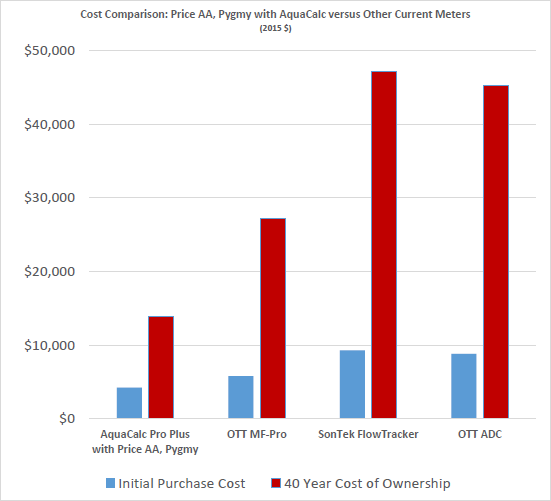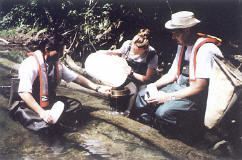 Loading... Please wait...
Loading... Please wait...Hydrological Equipment
NEWS RELEASE
Cost and Accuracy Comparisons

Mechanical Current Meter System with AquaCalc Versus Other Point Velocity Discharge Systems
Download PDF
Aquatic Sampling
 Water resource investigators must not only focus on assessments of the location, quantity and availability of water but also determination of water quality. The quality of a particular body of water, whether stream, river, lake or estuary can be assessed by examining the physical, chemical and biological characteristics. These parameters can be evaluated based upon sampling both the water itself, the sediments and aquatic life supported by the body of water being examined.
Water resource investigators must not only focus on assessments of the location, quantity and availability of water but also determination of water quality. The quality of a particular body of water, whether stream, river, lake or estuary can be assessed by examining the physical, chemical and biological characteristics. These parameters can be evaluated based upon sampling both the water itself, the sediments and aquatic life supported by the body of water being examined.
The instrumentation and samplers in this section are of standard use by the USGS, EPA and other federal and state agencies as well as international standards for testing as set forth in the ISO guidelines. To provide data for planners, developers, water-quality managers and pollution-control agencies, a high degree of reliability and standardization of this data is of paramount importance.
The instrumentation can be categorized into water quality samplers such as the Kemmer, horizontal and vertical Van Dorn water bottles, benthos samplers such as Ekman, Ponar and Van Veen, substrate samplers such as Hester-Dendy and periphyton, standard hand cores Kajak-Brinkhurst (K-B) and gravity tube cores and flowing water aquatic samplers such as the Surber, Hess and drift net.
Physical and chemical characteristics can be evaluated by instruments that continuously monitor and record these properties or by spot checks when the hydrologist is actually on-site making measurements. These samplers will collect water or sediment samples for examination in the lab or on-site with various tests. Water quality meters can be used on-site with the data recorded for later analysis.
Samplers used for biological parameter assessment include periphyton, benthic macroinvertebrates and fish.
Water Samplers
Water Samplers for field use come in several different styles for different applications and sampling protocols. These samplers collect water samples at various depths and locations for water quality and organism analysis.
Discrete Water Samplers
Dip sampling involves dipping a bottle into a water body. Dip sampling is not recommended for discharge-weighted sampling when it is possible to obtain a depth-integrated, isokinetic sample. The error introduced by dip sampling can be significant if the target analyzes are absorbed into suspended materials that are not uniformly distributed along the cross section. Care must be taken to avoid collecting particulates that are resuspended as the result of wading or bumping the sampler on the streambed. Procedure is as follows:
- To collect a dip sample in water that is too shallow to submerge an isokinetic, depth-integrating sampler, wade to where the sample(s) will be collected and immerse a bottle at the centroid of flow or at multiple locations along a cross section.
- Stand downstream of the bottle while it is being filled.
- To collect a dip sample where water is too deep to wade, lower a weighted-bottle sampler at the centroid of flow or at multiple locations along a cross section.
